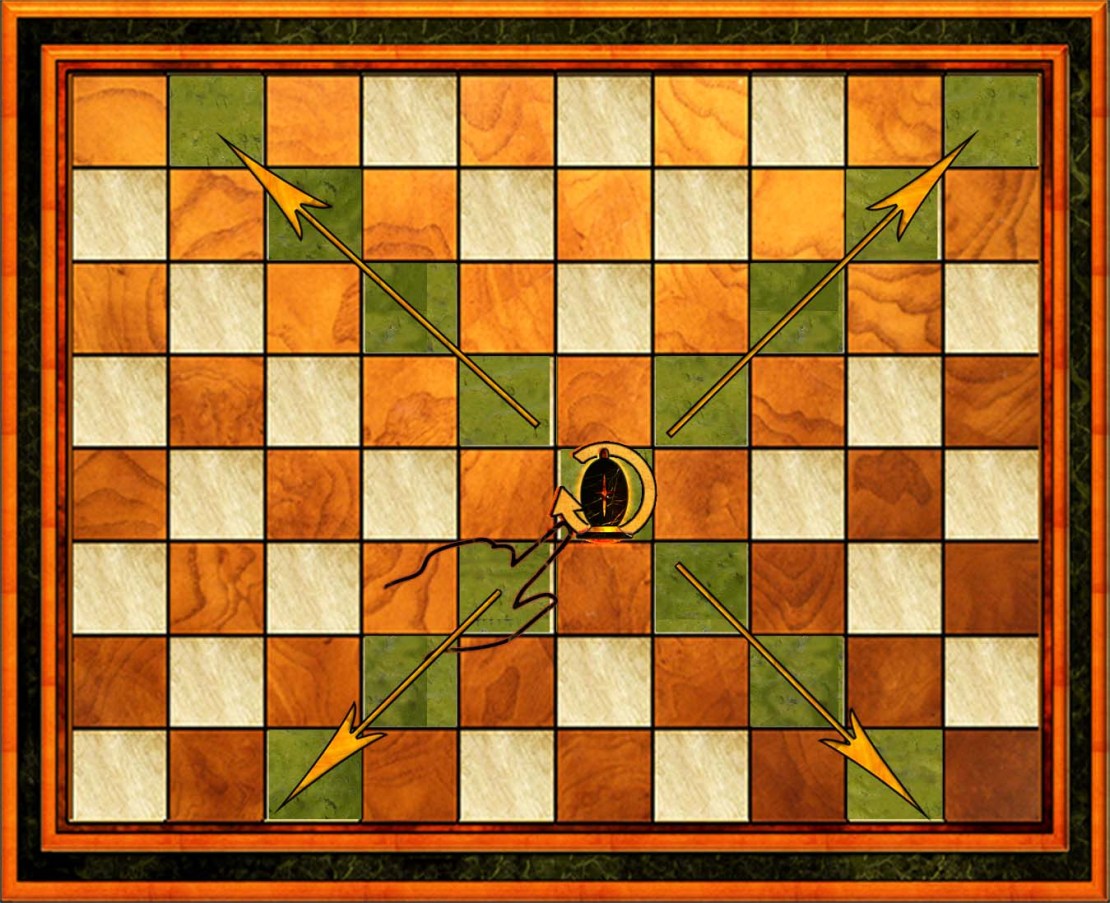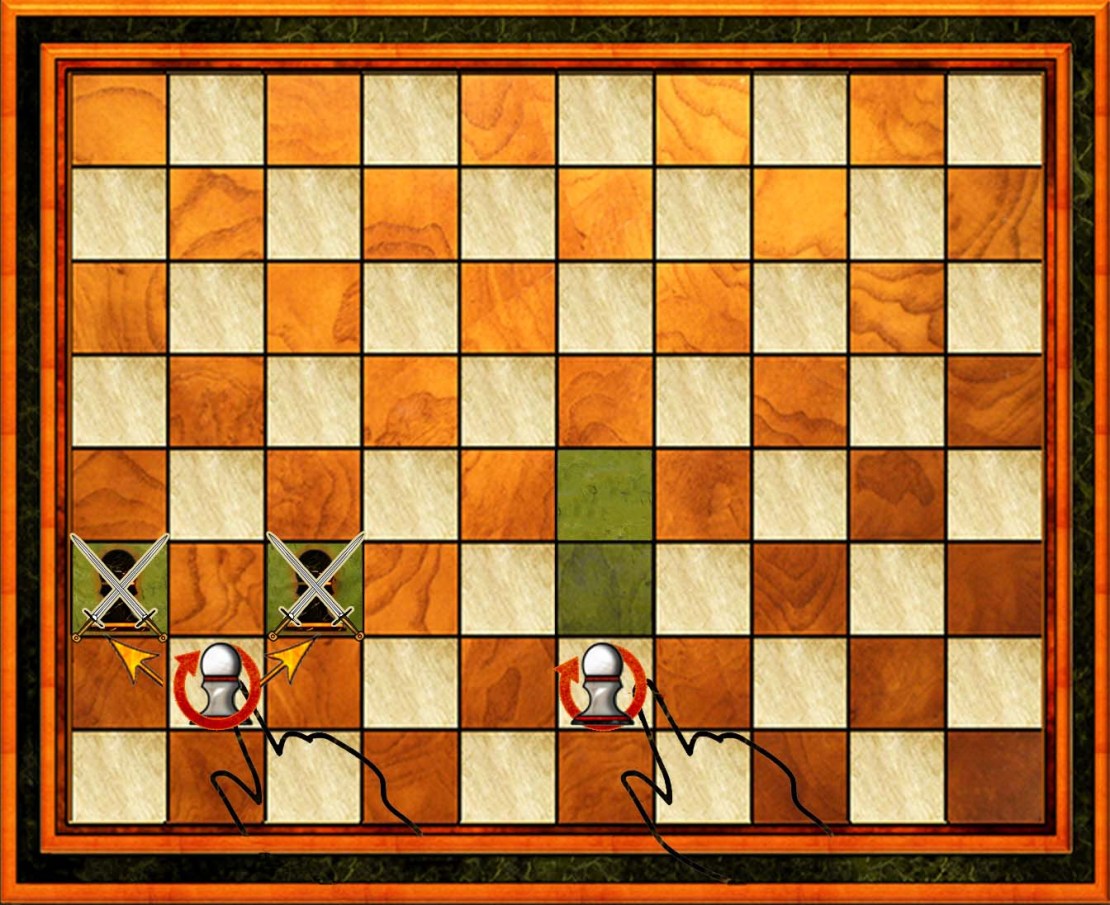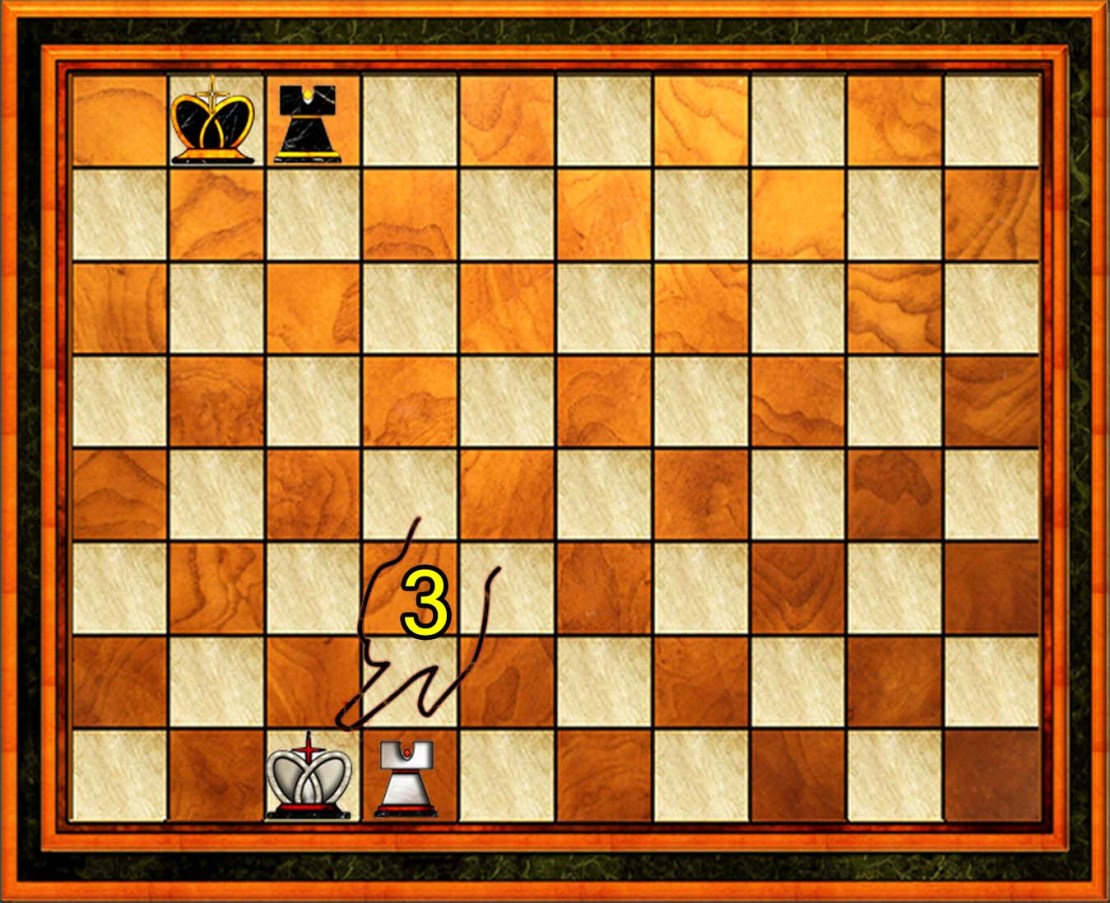
TENSOR CHESS GAME RULES
AS IN CLASSICAL CHESS, THE OBJECT OF TENSOR CHESS IS TO CHECKMATE THE OPPONENT’S KING. THE GAME IS PLAYED ON AN 8 X 10 BOARD WHERE A NEW PIECE, THE TENSOR BEAST, INCREASES THE POWER, MOBILITY AND SYNERGY OF THE OTHER PIECES.IF YOU ARE FAMILIAR WITH THE RULES OF TRADITIONAL CHESS, FEEL FREE TO SKIP AHEAD TO THE DYNAMIC MOVEMENTS SECTION BELOW.
SKIP AHEAD

THE KNIGHT
The knight moves forward or backward in an “L” shape: two squares vertically and then one square horizontally, or two squares horizontally and then one square vertically. It captures by landing on a square occupied by any enemy piece. The Beast and the Knight are the only pieces which can leap over other pieces. (Don’t confuse ‘leaping’ with ‘pass-through.)
THE BISHOP
The bishop can move any number of unoccupied squares diagonally, forward or backward. When it comes to an enemy piece (other than a beast piece), it can capture that piece by occupying its square.


THE ROOK
The rook can move forward or backward any number of unoccupied squares horizontally along a row (rank) or vertically along a column (file). When it comes to an enemy piece (other than a beast piece), it can capture that piece by occupying its square.
THE QUEEN
The queen can move like a rook any number of unoccupied squares horizontally along a row (rank) or vertically along a column (file). Or it can move diagonally like a bishop. But the queen cannot move like both a rook and a bishop on the same turn.

THE KING
The king moves one square in any direction as indicated by the green squares in the diagram below. The king can also perform a special move with the rook called castling.

THE PAWN
Unlike other pieces, the pawn cannot move backward. A pawn may move forward one square on the same column (file). Or, when it moves from the position it had at the start of the game, it may move two squares as indicated in the diagram below. Unlike other pieces, the pawn does not capture the way it normally moves. It normally moves straight forward, but it captures diagonally. It may capture an opponent’s piece that is on a square diagonally in front of it on an adjacent file.
THE PAWN - EN PASSANT
The pawn has a special move called capturing en passant. If a pawn moves two squares forward from its starting position, an opposing pawn may capture the first pawn as if it had only moved one square.
If a pawn moves two squares forward from its starting position, an opposing pawn may capture the first pawn as if it had only move one square.
THE BEAST
Dynamic Manuevers
depend on interacting with the new piece. The beast can move one square in any direction like the king.
The beast can also leap forward or backward over its own or opposing pieces and land on the next square if that square is unoccupied. It can leap diagonally, or leap horizontally along a row (rank) and vertically along a column (file). The beast can hop both vertically and horizontally on the same turn, but horizontal and vertical leaping cannot be combined with diagonal leaping.
The beast cannot move one square and then begin leaping. Nor can it leap and simply return to its starting square as this would be skipping a turn. It can, however, return to its starting square on the same turn if it captures an opposing beast by its final leap.
BEAST CAPTURE
The beast can only capture an opposing beast and can only be captured by an opposing beast. A beast captures an enemy beast by hopping over it rather than landing on the same square.
For example, a beast may hop over an enemy beast, not capture it, and proceed to hop over and capture another beast.
Or a beast may hop over an opposing beast, and not capture it on that first hop, but then hop back over the opposing beast (moving in the other direction) and capture it on that hop, all on the same turn.
CASTLING
Players may ‘castle’ to protect their kings. In this maneuver, the king will move closer to the right or left side of the board, either one or two squares from the edge, and the rook will move closer to the center of the row, past but next to the king. Castling is not permitted if the king or rook has moved previously.
CASTLING THROUGH A BEAST
To castle Tensor Chess, first select the king (1). A double arrow will appear above the rook. Then select the rook. (2). Two yellow outlines of the king will appear indicating where the king can move in castling. Select one of the two positions (3). Castling is then complete.

CHECK
The king is in ‘check’ when it is under direct attack and threatened with capture the next turn. A red glowing orb will appear around the king. If a player then tries to make a move that does not get out of check, an ‘illegal move’ message will flash. A player may get out of check by moving the king to a square where it is not threatened, capturing the threatening piece, or blocking by placing a piece between the king and the threatening piece (such blocking does not work if the attacking piece is a knight, since a knight can leap over other pieces.)
CHECKMATE
If it is not possible to get out of check, the king is ‘checkmated’ and the game is over. The word ‘checkmate’ will appear on the screen.


PASS THROUGH
A bishop, rook or queen can pass through a beast of its own color, but not through an enemy beast.
A beast acts as a shield for its own pieces and blocks opposing pieces.
A pass through may involve more than one beast.
A king may pass through only when castling.
A beast may pass through another beast when propelled.
A pawn may pass through only on its first move and only when moving forward to an unoccupied square. Pawns cannot pass though and capture.
RICOCHETING
A bishop, knight, rook or queen may ‘ricochet’ off a beast of the same color. To ricochet, a piece moves in the same way it usually moves, comes to a square occupied by its own beast, and, on the same turn, then shifts and changes direction and continues moving.
A piece can’t ricochet back to where it started on the same turn.
Kings and pawns can’t ricochet.
A beast can’t ricochet off another beast.
A player can only make one ricochet per turn.
To ricochet, select (tap) the piece you want to move and then select the square to which you want to move the piece via ricocheting. This process requires only two taps.

KNIGHT RICOCHET
The knight ricochets by moving to a square occupied by a beast of the same color and then making a further knight move. As shown in the diagram, a player would select (tap) the knight (1) and then choose and tap the final square on which he wants the knight to land (2).
BISHOP RICOCHET
A bishop can move to the square of a beast of the same color and then ricochet by moving at a right angle along another diagonal as shown in the diagram. Here the bishop is simultaneously attacking both the white king and the white queen.


QUEEN RICOCHET
The queen can ricochet like a bishop or like a rook. If a queen moves diagonally, like a bishop, to a square occupied by a beast of the same color, it can only ricochet along a diagonal like a bishop. If the queen moves like rook to the square occupied by the beast, it can only ricochet vertically or horizontally like a rook.
PROPELLING
A pawn, knight, bishop, rook, or queen may ‘propel’ a beast of its own color, essentially moving two pieces on the same turn. The propelling piece comes to a beast’s square and occupies the square. The beast then goes off that square by moving in the manner of that piece.
To propel in Tensor Chess, select (tap) the piece, then select (tap) the beast, which will then have a flashing propel sign over it. Then select one of the green squares that appear in order to select the square to which to propel the beast.
Three taps are required: piece, beast, square. Select (tap) the propelling piece.
Select the beast. A flashing propel sign (+) will appear over the beast.
Select the square to which you want to propel the beast.
Propelling can be in any direction except when the propelling piece is a pawn.
Kings cannot propel.
A beast cannot propel another beast. A player cannot ricochet and propel on the same turn.
Do not confuse propelling with ricocheting. In ricocheting, a piece comes to a beast’s square and makes a further move while the beast remains stationary. In propelling, a piece comes to a beast’s square, remains there, and moves the beast to another square. Ricocheting requires two taps. Propelling requires three taps, since in propelling, the beast is also tapped as players propel the Beast to its destination.


KNIGHT PROPEL
Here the black knight can propel the black beast to any of the green squares that have a small beast sign on it. Select the knight (1). Then select the beast (2). A flashing propel sign will appear. Tap the square to which you want to send the beast (3).
BISHOP PROPEL
Here the black bishop can propel the black beast to any of the green squares that have a small beast sign on it. Select the bishop (1). Then select the beast (2). A flashing propel sign will appear. Tap the square to which you want to send the beast (3).


ROOK PROPEL
Here the black rook can propel the black beast to any of the green squares that have a small beast sign on it. Select the rook (1). Then select the beast (2). A flashing propel sign will appear. Tap the square to which you want to send the beast (3).
QUEEN PROPEL
How the beast moves when propelled by a queen depends on how the queen came to the square occupied by the beast. If it came to the square by moving like a rook, the propelled beast moves like a rook. If it came by moving like a bishop, the beast moves like a bishop.
Select the queen (1). Then select the beast (2). A flashing propel sign will appear. Tap the square to which you want to send the beast (3).


PAWN PROPEL
On its first move a pawn can propel a beast one square forward.














